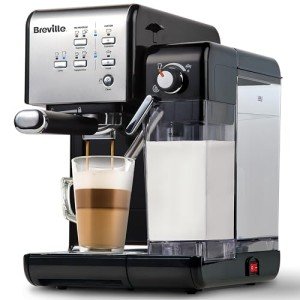The Art of Italian Espresso Machines: A Brewed Tradition
Italian espresso machines are not just devices; they are an essential part of Italy's rich coffee culture, representing a mix of artistry, engineering, and design. Coffee aficionados all over the world acknowledge the importance of high-quality espresso, a staple of Italian life and food. This article checks out the history, mechanics, types, and elements to think about when buying an Italian espresso machine, showing the depth of this beloved beverage and its developing approaches.
History of Espresso Machines
The espresso machine's development dates back to the early 20th century in Italy, where coffee was not merely a beverage but an important social routine. The initial attempts to brew espresso begun with simple, stove-top designs, slowly developing into intricate machines that might duplicate the ideal brew.
- 1901-- The First Espresso Machine: The first steam-powered espresso machine, referred to as the "Ideale," was established by Luigi Bezzera. This machinery marked a turning point in espresso brewing.
- 1938-- The Lever Machine: The introduction of the lever machine made it simpler to manage the pressure utilized in espresso extraction, boosting taste consistency.
- 1947-- The Automatic Machine: Reaching more customers, Gaggia released the first automatic espresso machine, further promoting espresso bars.
- 2007-- The Digital Age: Technological advancements led to the birth of fully programmable machines, enabling users to customize their brewing settings to achieve a customized coffee experience.
Secret Features of Italian Espresso Machines
Italian espresso machines embody precision, craftsmanship, and innovation. Here are some crucial elements that highlight their significance:
| Feature | Description |
|---|---|
| Boiler Type | Figures out how heat is generated and maintained. Common types consist of single boiler, dual boiler, and heat exchanger. |
| Group Heads | Where the coffee is brewed; commercial machines typically have several group heads for performance. |
| Pressure Control | Vital for attaining the best espresso; most machines run at 9 bars of pressure. |
| Frothing Capabilities | The steam wand enables milk frothing, important for drinks like cappuccino and latte. |
| Construct Quality | The materials utilized (stainless steel, brass, and so on) influence sturdiness and heat retention. |
Kinds Of Italian Espresso Machines
Selecting the ideal machine hinges on user choices, budget, and planned use. Below are the primary kinds of Italian espresso machines:
Manual Espresso Machines
- Pros: Offer full control over the brewing process, enabling a personalized touch.
- Cons: Require ability and practice, can be labor-intensive.
Semi-Automatic Machines
- Pros: Provide a balance in between automated and manual procedures; users manage water circulation.
- Cons: Can have a steeper knowing curve than totally automatic machines.
Fully Automatic Machines
- Pros: Simplify the developing process with push-button operations; perfect for beginners.
- Cons: May sacrifice a few of the nuances of manual developing.
Super-Automatic Machines
- Pros: Grind, tamp, brew, and froth immediately; convenient for busy lifestyles.
- Cons: Less control over the brewing variables, capacity for a less genuine espresso experience.
Buying Guide: Factors to Consider
Selecting the perfect Italian espresso machine can be challenging, however considering the following aspects can streamline the decision-making procedure:
- Budget: Italian espresso machines range from affordable to high-end models, so set a budget upfront.
- Usage Frequency: Evaluate how frequently you will use the machine; day-to-day users might want a more resilient alternative.
- Space: Measure your kitchen or counter area; some machines can be large and require sufficient clearance.
- Maintenance: Consider ease of cleansing; machines with removable parts or built-in cleansing features may reduce maintenance.
- User Skill Level: Beginners might choose fully or semi-automatic machines, while experienced baristas can handle manual machines.
- Brand Reputation: Research brand names understood for quality, such as Breville, Gaggia, and La Marzocco.
Popular Italian Espresso Machine Brands
Italian workmanship is renowned for producing a few of the best espresso machines worldwide. Here are top brands worth thinking about:
- Gaggia: Known for its home espresso machines and affordability.
- La Marzocco: An exceptional brand name known for its commercial-grade machines and innovative innovation.
- Rancilio: Renowned for its durable develop and professional-quality machines ideal for home and commercial use.
- Sage/Breville: Offers advanced features and user-friendly designs, best for both novices and enthusiasts.
Frequently asked questions
What is the distinction in between espresso and regular coffee?
Espresso is a concentrated coffee brewed by forcing warm water through finely-ground coffee under pressure. It has a thicker consistency, richer taste, and higher caffeine concentration than routine coffee.
Can I make milk-based beverages with an espresso machine?
Yes, numerous Italian espresso machines come with a steam wand to froth milk for drinks like coffees, lattes, and macchiatos.
How typically should I clean my espresso machine?
Regular upkeep is vital. Usually, an extensive cleaning is advised every couple of weeks, while descaling ought to be done every 1 to 3 months, depending on water firmness.
What is the ideal pressure for brewing espresso?
The perfect pressure for developing espresso is around 9 bars. This pressure makes sure the ideal extraction of flavors from the coffee premises.
Are more expensive machines worth the financial investment?
Higher-end machines typically utilize much better products and technology, offering improved toughness and more consistent results. For major coffee lovers, purchasing an excellent machine can raise the espresso experience considerably.
Italian espresso machines are far more than mere brewing gadgets; they are an event of a cultural tradition that has actually influenced coffee intake worldwide. With numerous designs readily available to fit any user's needs-- varying from beginners to skilled baristas-- there is an Italian espresso machine completely matched for everybody. As you embark on your espresso journey, comprehending the history, mechanics, and choices will enhance your experience and gratitude for this time-honored drink. Whether you look for to recreate a coffee shop atmosphere at home or improve your developing technique, these machines can providing extraordinary cups of espresso adorned with the abundant history of Italian coffee culture.

